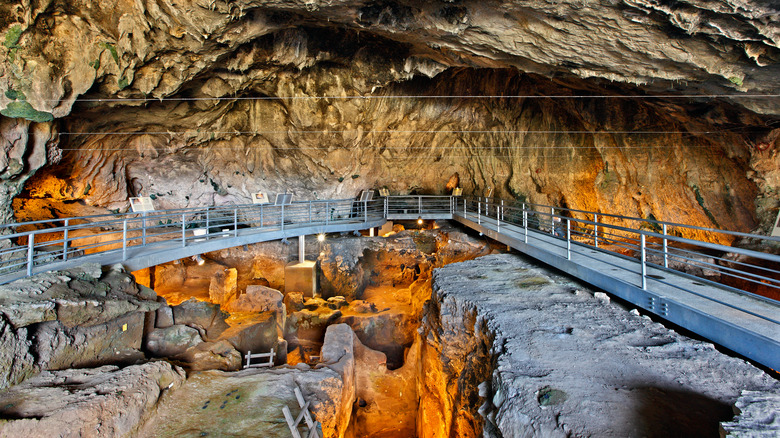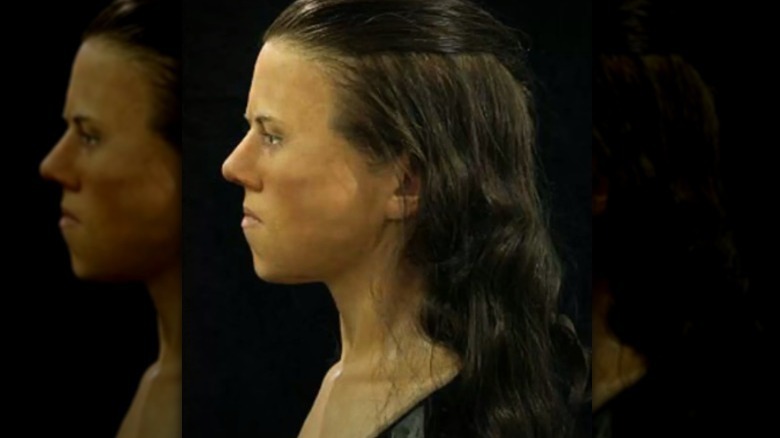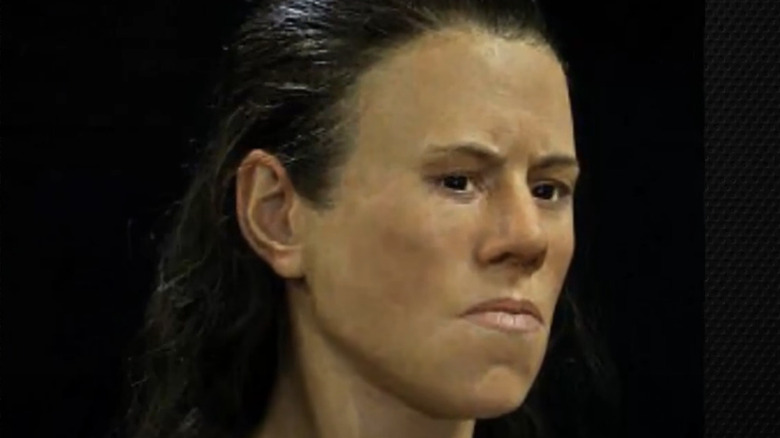How The Theopetra Cave Managed To Bring A 7,000-Year-Old Teenager Back To 'Life'
According to Ancient Origins, the Theopetra Cave located in central Greece has been occupied by humans for some 130,000 years. Neanderthals took up residence in the cave in the Middle Paleolithic period, and modern-day humans remained there throughout the Neolithic era and beyond. For this reason, the cave, more than 300 feet off the valley floor, offers archaeologists an unparalleled glimpse into pre-history, as well as what life was like for ancient humans and now extinct human subspecies. Evidence of the oldest-known human construction also exists on the site.
In 1993, the remains of a teenage girl were recovered at Theopetra, a modern human that scientists named Avgi, meaning dawn, and who lived and died in the Mesolithic, roughly 7,000 to 9,000 years ago, based on a 2018 article from Greek Reporter. Estimates says she was between 15 and 18 years old when she died, according to the BBC. A few decades after Avgi's discovery, scientists used modern technology such as 3D printing and CT scans to recreate what Avgi might have looked like, re-creating a human face who lived in a period that some call the dawning of modern civilization.
Avgi died in poor health
Before the digital recreation of Avgi's face, scientists closely examined her remains for clues as to what her life was like. What they found suggests that Avgi lived a hard existence in her few years on the planet, with a large, jutting jaw possibly formed by chewing animal hide with which she made leather. As far as Avgi's diet, her remains suggest she lived with vitamin and iron deficiencies. She also may have suffered scurvy caused by poor vitamin C intake, as the BBC goes on to note.
Furthermore, Avgi's death may have been caused by mobility issues in her joints, and in her hip area in particular. As Greek Reporter explains, the reconstruction of Avgi was only made possible because her skull and teeth were remarkably well preserved. Eye and hair color were best guesses based on the modern population from the area. Once Avgi's reconstruction was revealed, her cross expression was noted. Orthodontics professor Manolis Papagrikorakis, who worked on the project, said (via BBC), "It's not possible for her not to be angry during such an era."
Her skull and skeleton were recreated using a 3D printer
Avgi's skull and skeleton were so fragile, as Live Science notes, that before the reconstruction began, her remains were digitally recreated using a 3D printer. Oscar Nilsson worked on the project, a Swedish sculptor known to work on such projects as recreating the faces of ancient vikings and a more than 1,000-year-old Wari queen from Peru. In close collaborations with scientists, Nilsson determined details like gender and weight. Nilsson then recreated what Avgi looked like using layers of clay over her reproduced skull.
Ear shape, hair, and eye color were approximated, as only so much information can be gleaned from ancient remains, according to Live Science. Now that the re-creation of Avgi has been completed, she remains on display at the Acropolis Museum in Athens. On the value of such projects, Nilsson said (va Live Science), "Often, when you go to a museum and read the text and perhaps see a skull, you don't get social contact with history ... But history is made up of people, and to meet these people brings history to life."


